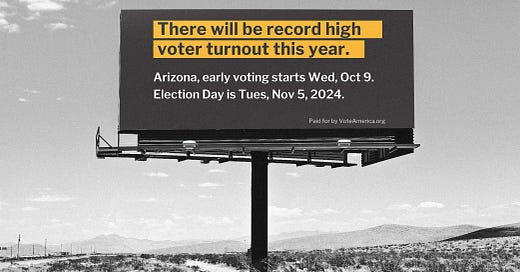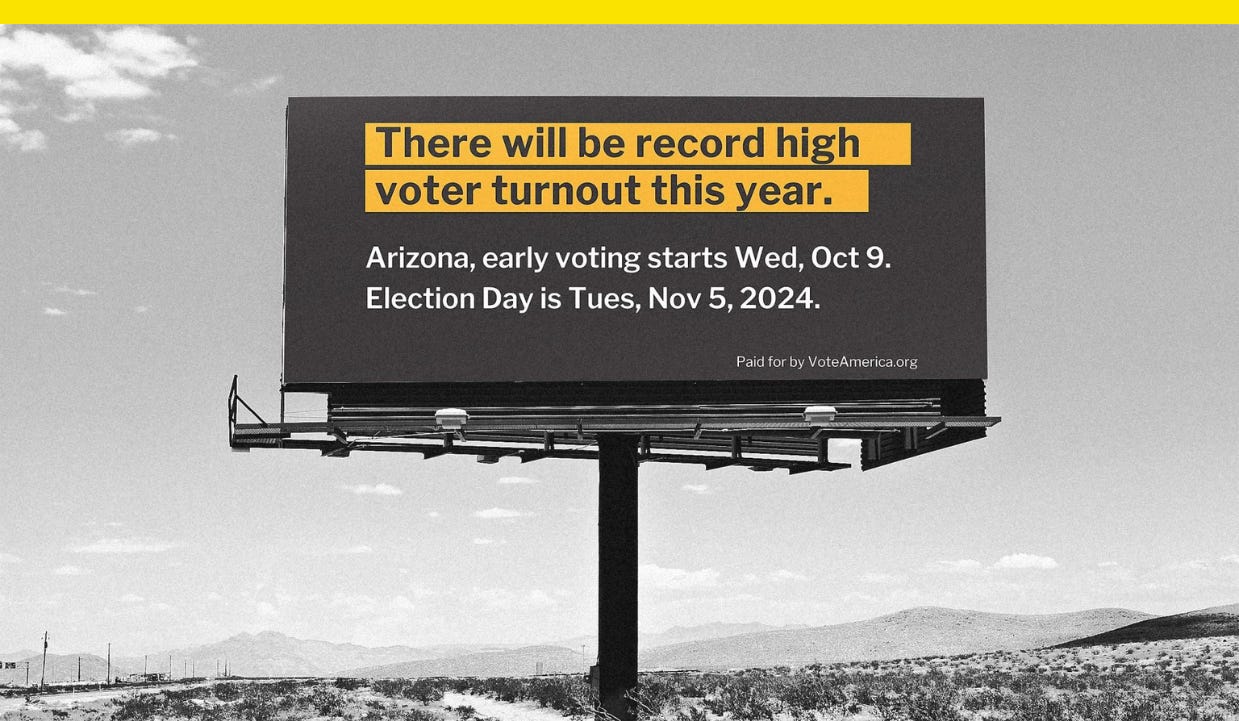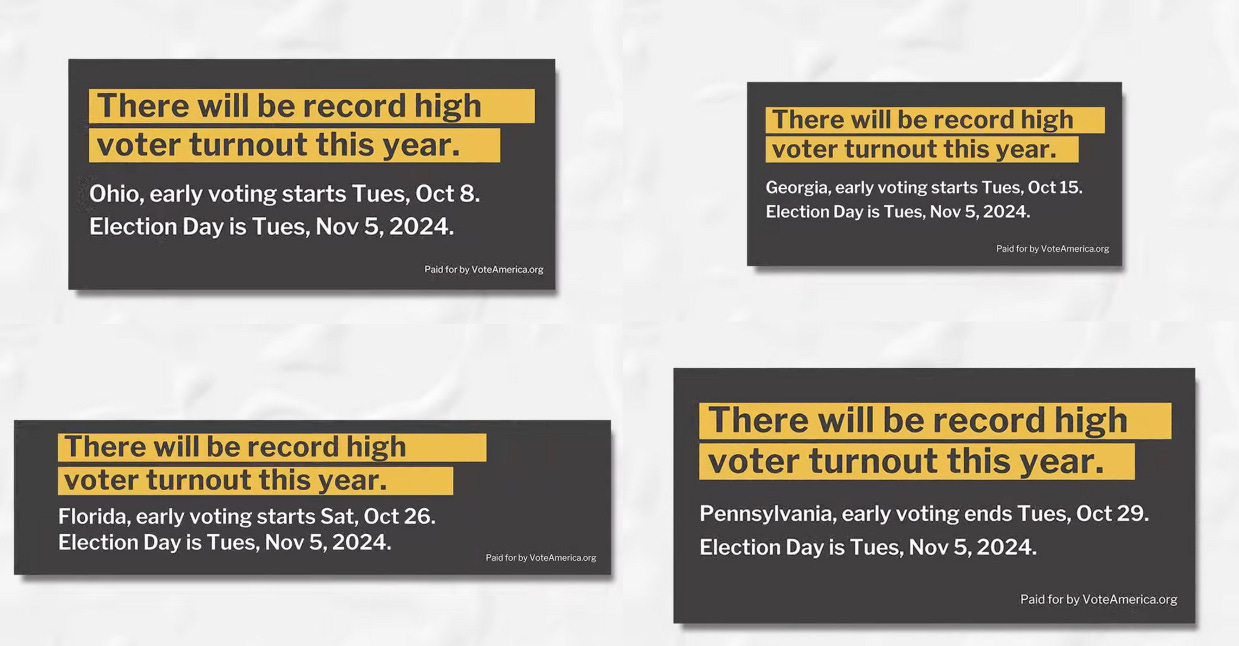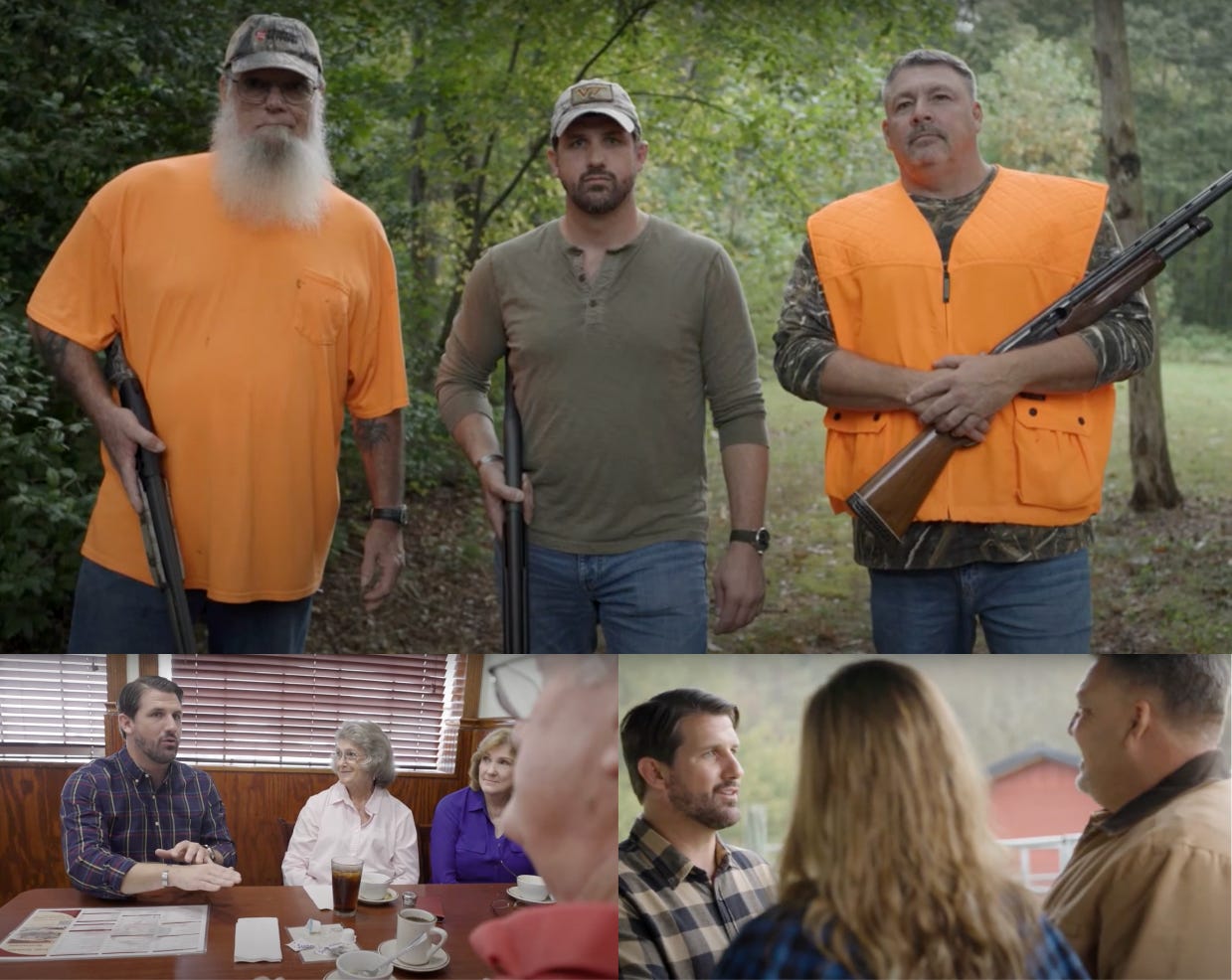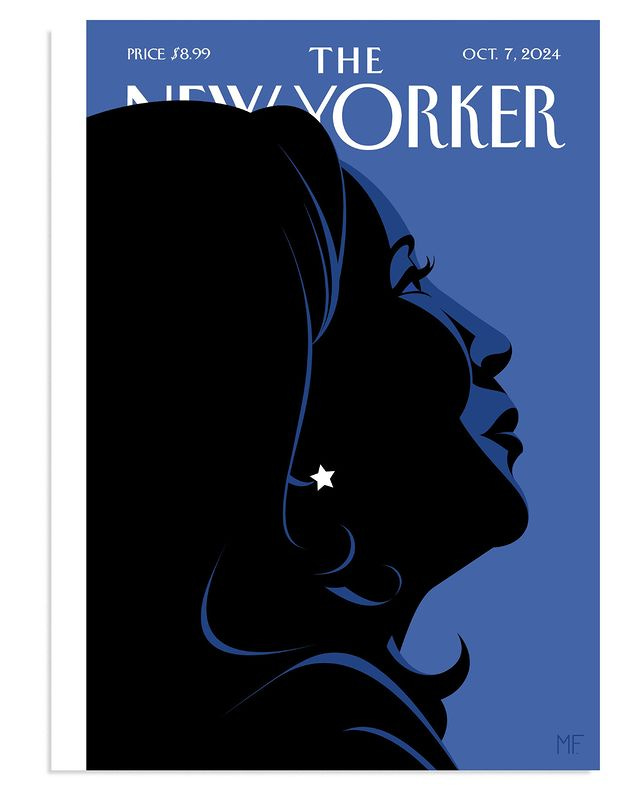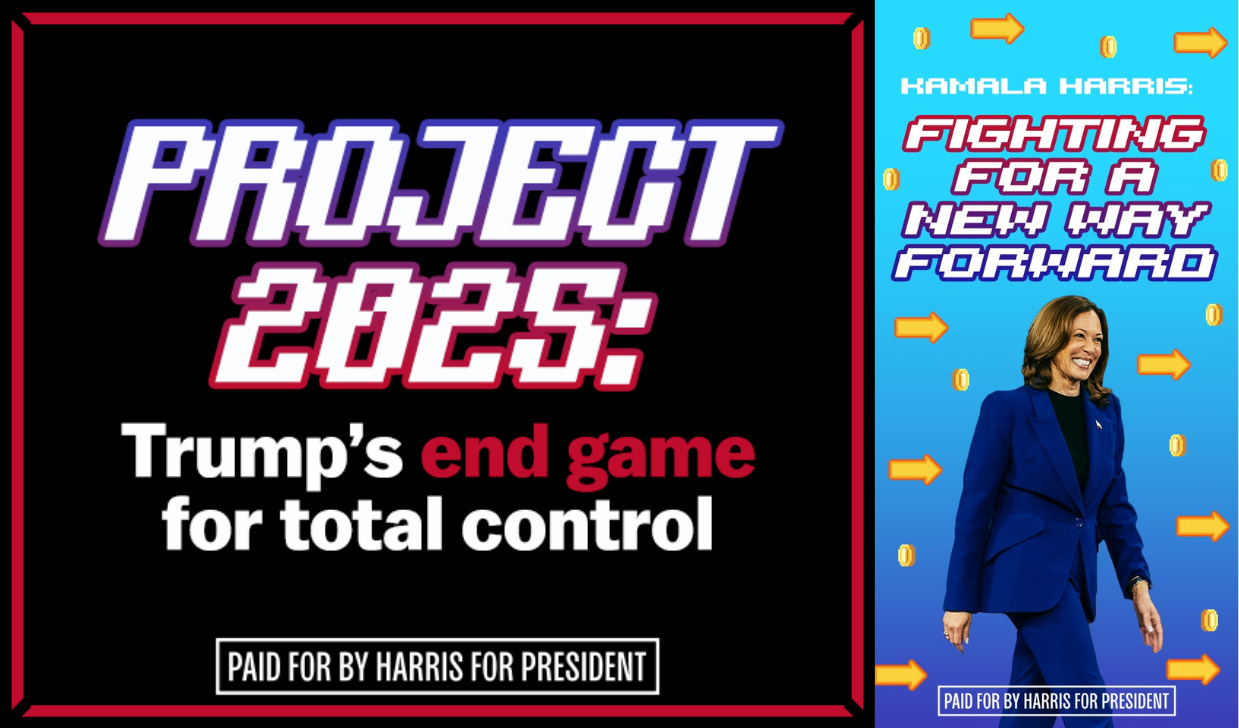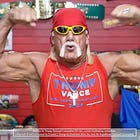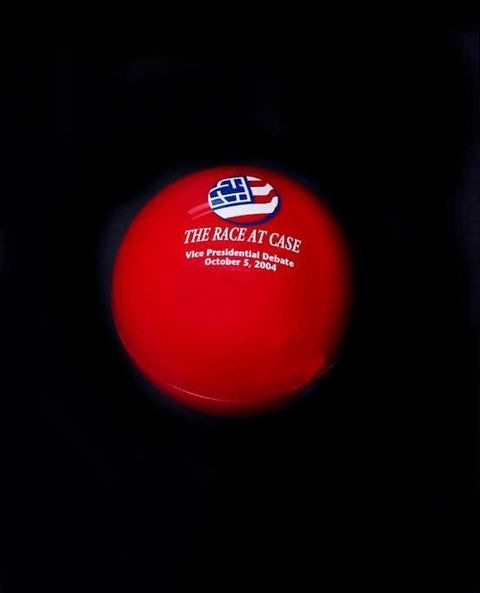This simple billboard campaign just tells you when Election Day is and when early voting starts
Plus: This congressional candidate posed like he was taking a family photo for campaign ad B-roll. The family wasn’t his.
Hello, in this issue we’ll look at…
This simple billboard campaign just tells you when Election Day is and when early voting starts
This congressional candidate posed like he was taking a family photo for campaign ad B-roll. The family wasn’t his.
Scroll to the end to see: the Harris campaign’s ads geared to gamers 🎮
These billboards don’t tell you who to vote for, just when to vote
Billions of dollars will be spent this year persuading Americans who to vote for, but one billboard campaign is just telling them when to vote.
VoteAmerica, a voter mobilization group, is spending $7 million to put up approximately 800 billboards across 10 states with information about early voting and Election Day. The billboards are simple. They predict that “there will be record high voter turnout this year,” and list the date for Election Day (which is November 5) and list when early voting starts in the state. The ads will go up in Arizona, Florida, Georgia, Michigan, Nevada, North Carolina, Ohio, Pennsylvania, Texas, and Wisconsin.
A 2016 study by the American Council of Trustees and Alumni, an education-focused nonprofit, found 37% of Americans didn’t know when Election Day was. You can’t vote if you don’t know when, though, hence the campaign.
“There’s a myth that people don’t vote because they don’t care or they are turned off from politics,” Debra Cleaver, the founder and CEO of VoteAmerica tells me. “The truth is, people don’t vote because voting is hard. The date of the election changes every year. Rules change drastically between big elections in some states, and all of the rules vary state by state. It’s unrealistic to expect the average voter to keep up.”
VoteAmerica has been running informational ads about when to vote since 2017, including in special and off-year elections, and Cleaver says she got the idea from “voter suppression” billboards with messages meant to discourage people from voting, like a billboard design in 2012 that warned “Voter Fraud Is a Felony.”
“In both midterm and presidential elections, nefarious groups have put up hundreds of billboards in specifically Black and brown neighborhoods designed to keep people from showing up to vote,” she says. “We know that if these spaces aren’t secured, they could be weaponized to spread false information.”
In VoteAmerica’s first campaign, they rented every single billboard, transit shelter, and bus-stop ad in majority Black counties in Alabama for four weeks ahead of a special Senate election. Door knockers found “every single person they spoke to knew an election was coming because of the billboards,” Cleaver says. In 2018, they found people who lived near their billboards and out-of-home advertising were more likely to vote than people who didn’t.
Says Cleaver: “The single best predictor of whether or not you vote is whether you know the date of the election.”
Politics in the front, pop culture in the back.
Subscribe to my new newsletter Whig:
This congressional candidate posed like he was taking a family photo for campaign ad B-roll. The family wasn’t his.
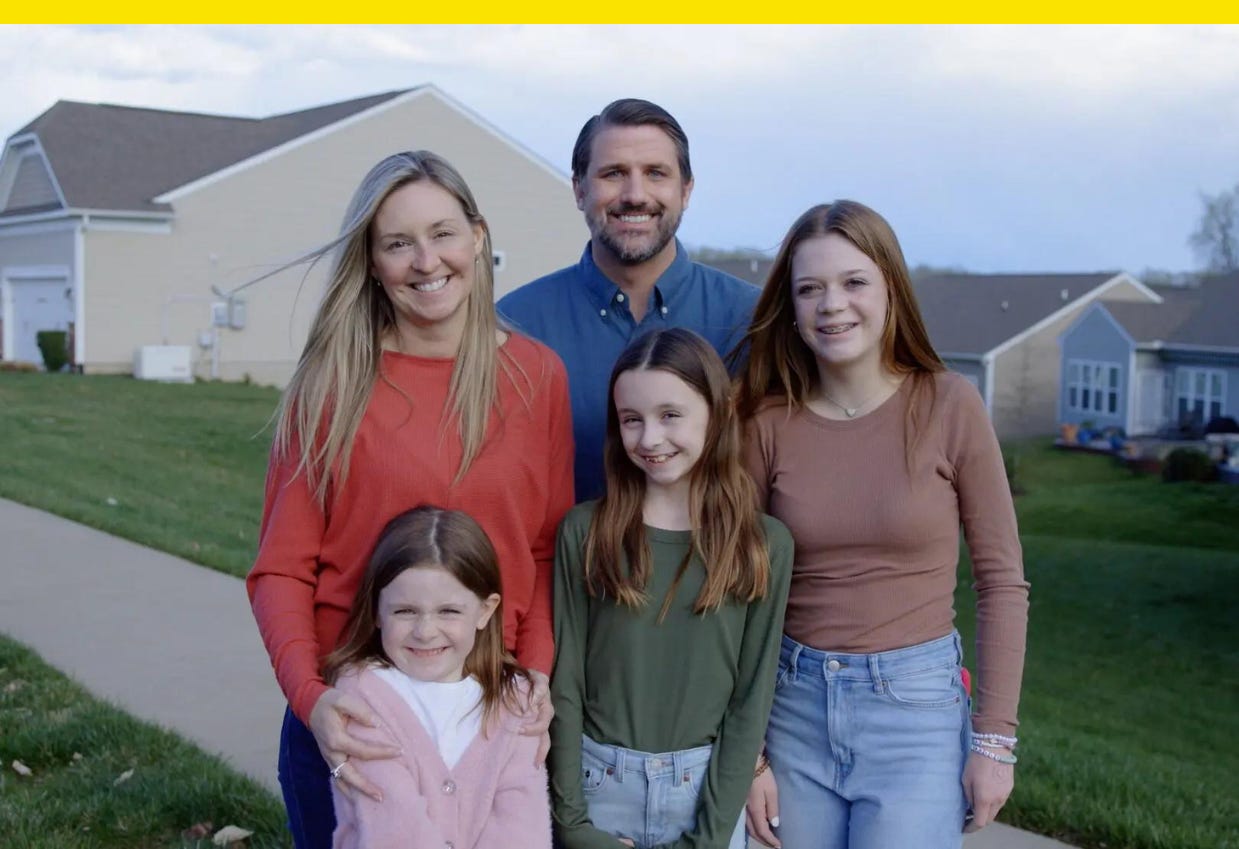
Derrick Anderson is a former Army Green Beret and Republican running for Congress in Virginia. He’s also unmarried, but you might not have guessed that looking at B-roll he filmed for campaign ads.
Though Anderson is engaged, the woman he was filmed posing with in the B-roll footage is not his fiancé, and the three girls with them are not their daughters. They’re actually the wife and children of a longtime friend. Anderson’s campaign described the footage as showing the candidate “with female supporters and their kids,” according to the New York Times, which first reported on the footage.
“Derrick’s opponent and every other candidate in America are in similar pictures and video with supporters of all kinds,” the campaign spokesperson said, criticizing the Times for focusing on the footage, which hasn’t actually been featured in an ad.
Campaigns aren’t able to otherwise coordinate with super PACs, but they can supply footage that super PACs are free to use in their ads. Senate Minority Leader Mitch McConnell’s campaign famously did this in 2014, making public footage of their candidate wordlessly smiling for minutes, and it became a meme.
Anderson’s campaign was similarly providing B-roll for friendly outside groups that want to make ads to help him out. Another wordless video from his campaign shows the candidate talking with people at a diner and posing with men wearing camo and hunters orange and holding firearms.
These super PAC-friendly B-roll videos are interesting documents in and of themselves, showing the political ad tropes of their time and how candidates hope to portray themselves. Anderson’s shown in his B-roll as a Second Amendment supporter eager to listen to voters. And a family man.
Though Anderson’s campaign was dismissive that there was anything deceptive about the footage, it’s telling that posing with a woman and kids was on their shot list along with talking to voters at a diner and hunting in the woods. Other footage showed Anderson, the woman, and the girls sitting around a kitchen table, per the Times.
Audio of vice presidential nominee Sen. J.D. Vance (R-Ohio) saying people without children “don’t really have a direct stake” in the country inspired outrage when it resurfaced. That argument is, of course, a fiction, especially in a country whose chief founding father George Washington was childless (though he did help raise Martha Washington’s children from a previous marriage), but it also speaks to the role family plays in politics, fairly or not. Spouses and children can soften a candidate’s image and speak about his or her character in way no one else can.
Single people should be able to run for office without having to resort to borrowing a buddy’s family for B-roll. One formerly single presidential candidate tried playing up his family values another way. When the recently wed Sen. Tim Scott (R-S.C.) announced his presidential campaign last year, he was still unmarried, so in lieu of a spouse, he invited his mom on stage during his announcement speech. She even appeared in ads too.
Have you seen this?
Illustrator Malika Favre’s portrait of Kamala Harris is on the Oct. 7, 2024 cover of the New Yorker. Called “The Candidate,” the image illustrates the magazine’s endorsement of Harris for president. “One challenge for this minimal portrait was to find the right angle, a sharply lit profile that captures her strength and also conveys a feeling of hope,” Favre told the magazine. “As she looks forward and up, so do we.” [The New Yorker]
Melania says nothing prepared her more for being FLOTUS than fashion. “The fashion industry, it’s glamorous but it’s at the same time very tough.” [Whig]
With ads on IGN, Harris and allies make a push for the gamer vote. The campaign’s ad push on the largest gaming news site and a “Geeks & Nerds for Harris” fundraiser highlight the electoral tussle over young male voters. [The Washington Post]
Making GOTV calls this fall? Three do’s and don’ts. If you haven’t already, start having conversations about your turnout program now so you’re ready to go when it’s time for the final push. [Campaigns & Elections]
History of political design
Vice Presidential Debate Magic 8 ball (2004). This Magic 8 ball was put out by Case Western Reserve University when it hosted the debate between then-Vice President Dick Cheney and the Democratic vice presidential nominee then-Sen. John Edwards of North Carolina. The toy revealed responses including “Consult Me Later,” “Cannot Foretell Now,” and “You Can Count On It,” according to the Smithsonian National Museum of American History.
A portion of this newsletter was first published in Fast Company.
Like what you see? Subscribe for more:

